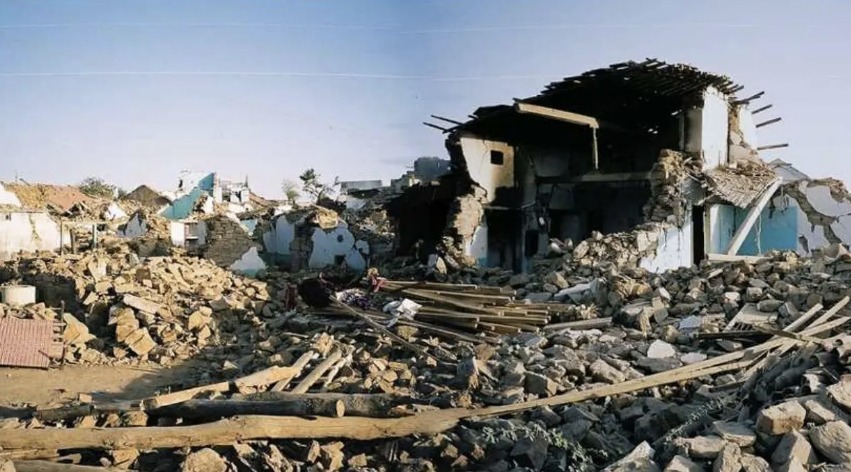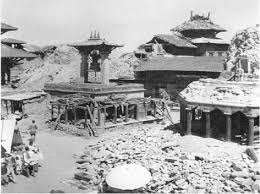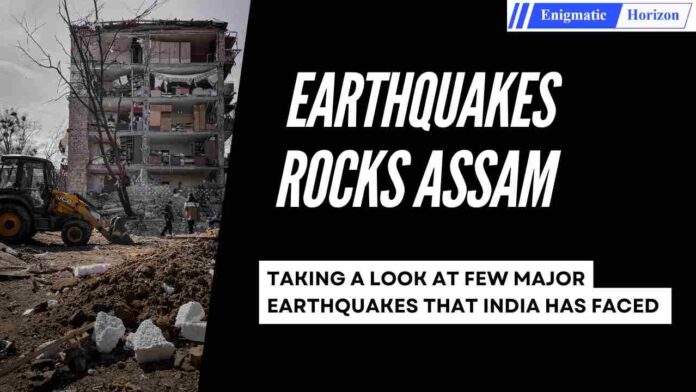Huge Earthquake in Assam has shocked the entire state!
In the early hours of February 27, 2025, a powerful earthquake measuring 5.0 on the Richter scale struck Assam’s Morigaon district at approximately 2:25 a.m. The tremors were felt in Guwahati and several neighboring areas, causing panic among residents. The National Center for Seismology (NCS) confirmed that the earthquake occurred at a depth of 16 kilometers beneath the Earth’s surface.
Thankfully, so far, no major damage or casualties have been reported as of now, the quake serves as a grim reminder of Assam’s vulnerability to seismic activity. The region falls under Seismic Zone V, the highest-risk category in India, which has experienced several catastrophic earthquakes in the past. It is moments like these that jolt us out of our day-to-day routine. Such events remind us how fragile our existence truly is. We get so engaged in our day-to-day activities that we forget how vulnerable our lives are, until we are reminded by nature in a very unsettling way.
The Deadliest Earthquakes in India’s History
India has a long history of devastating earthquakes, many of which have claimed thousands of lives and reshaped the landscape of entire regions. Let us take a look at some of the deadliest earthquakes recorded in India’s history:
Assam-Tibet Earthquake (1950) – Magnitude 8.6

- Date: August 15, 1950
- Deaths: ~4,800
- Impact: One of the most powerful earthquakes recorded in India, the Assam-Tibet earthquake, caused widespread destruction in Assam and parts of Tibet. The tremors triggered massive landslides, changed the course of rivers, and resulted in severe flooding. Entire villages were wiped out, and aftershocks continued for months, keeping the region in fear.
Latur Earthquake (1993) – Magnitude 6.4
- Date: September 30, 1993
- Deaths: ~9,748
- Impact: Maharashtra’s Latur district experienced one of the deadliest earthquakes in Indian history. The destruction was immense, with thousands of homes reduced to rubble. The earthquake was particularly devastating because it struck an area considered seismically stable, catching residents and authorities off guard.
Gujarat Earthquake (2001) – Magnitude 7.7
- Date: January 26, 2001 (Republic Day)
- Deaths: ~20,000
- Impact: One of India’s worst natural disasters, the Gujarat earthquake struck the state of Gujarat, particularly Bhuj, on Republic Day. The tremors were felt as far away as Delhi, Nepal, and even parts of Pakistan. Entire towns were flattened, and over 1.5 million people were left homeless. The extensive damage led to a large-scale relief and rebuilding effort.

Kashmir Earthquake (2005) – Magnitude 7.6
- Date: October 8, 2005
- Deaths: ~86,000 (including casualties in Pakistan-administered Kashmir)
- Impact: The earthquake caused widespread devastation in both Indian and Pakistani territories. In Jammu and Kashmir, entire villages and towns were destroyed. Landslides and collapsing infrastructure made rescue operations extremely difficult, with thousands trapped under debris. It remains one of the deadliest earthquakes in South Asia.
Bihar-Nepal Earthquake (1934) – Magnitude 8.0

- Date: January 15, 1934
- Deaths: ~30,000
- Impact: One of the most catastrophic earthquakes in India’s history, this event devastated large parts of Bihar and Nepal. Cities like Patna, Muzaffarpur, and Kathmandu was heavily damaged. The earthquake also had lasting effects on the region’s infrastructure, with bridges collapsing and farmlands turning barren due to soil liquefaction.
India’s Seismic Risk and Preparedness
India sits on several tectonic plates, making it highly susceptible to earthquakes. The Indo-Australian plate and the Eurasian plate frequently collide, triggering seismic activity, especially in the Himalayan and northeastern regions. The increasing population and urbanization in high-risk areas further amplify the danger.
The Assam earthquake today highlights the need for better earthquake preparedness. While India has improved its seismic monitoring and early warning systems, challenges remain in enforcing earthquake-resistant infrastructure, especially in rural and densely populated urban areas.
Conclusion
The earthquake in Assam today serves as a stark reminder of the country’s vulnerability to seismic disasters. From the 1934 Bihar-Nepal earthquake to the 2001 Gujarat disaster, history has shown that India is no stranger to deadly tremors. As the country continues to develop, investing in earthquake-resistant infrastructure, early warning systems, and community awareness is crucial to minimizing future tragedies. In a world where we are consumed by the everyday rush of life, these moments force us to pause and appreciate the fragile nature of our existence, reminding us to always be prepared.
